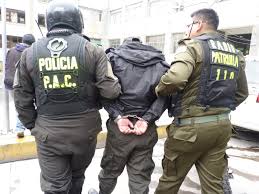 The Texas Court of Criminal Appeals analyzes both speedy trial and speedy revocation motion matters under the factors set forth by the United States Supreme Court in Barker v. Wingo, 407 U.S. 514 (1972). These factors include: (1) the length of the delay, (2) the reasons for the delay, (3) the defendant’s assertion of the right (to a speedy trial), and (4) the possible prejudice to the Defendant as a result of the delay. As applied to this case, the State cannot overcome the presumptive prejudice associated with a thirty eight month delay in executing the capias, a similar delay in hearing from the time of issuance, and at least three of four Barker factors weigh in favor of dismissal.
The Texas Court of Criminal Appeals analyzes both speedy trial and speedy revocation motion matters under the factors set forth by the United States Supreme Court in Barker v. Wingo, 407 U.S. 514 (1972). These factors include: (1) the length of the delay, (2) the reasons for the delay, (3) the defendant’s assertion of the right (to a speedy trial), and (4) the possible prejudice to the Defendant as a result of the delay. As applied to this case, the State cannot overcome the presumptive prejudice associated with a thirty eight month delay in executing the capias, a similar delay in hearing from the time of issuance, and at least three of four Barker factors weigh in favor of dismissal.
In Barker, the U.S. Supreme Court stated that the “length of delay that can be tolerated for an ordinary street crime is considerably less than for a serious, complex conspiracy charge.” Barker, 407 U.S. at 531. The Texas Court of Criminal Appeals has found a two year and ten month delay between arrest and hearing on a speedy trial motion to be “presumptively prejudicial” in a “plain vanilla DWI case.” Zamorano v. State, 84 S.W. 3d 643, 649, 654 (Tex. Crim. App. 2002). In addition, the Zamorano Court found that the factor of delay, in and of itself, weighed “heavily against the State,” after considering the almost four-year delay between arrest and ultimate resolution of the case. Zamorano, 84 S.W.3d at 649.
 Sherman & Plano, TX Criminal Defense Lawyer Blog
Sherman & Plano, TX Criminal Defense Lawyer Blog



 Going back to the Constitution of the United States, American citizens are guaranteed a speedy and public trial. The public part is why a Court cannot bar you from entering to watch a trial unless you are a witness, but the speedy part has been developed over the years. I will concentrate on the State of Texas right to a Speedy Trial this week, which is overwhelmingly similar to the Federal Right but without a few federal specific statutes that can effect federal criminal cases. Additionally, citizens also have a right to a speedy hearing if the State of Texas files a motion to adjudicate or revoke probation, which is the procedure upon an alleged probation violation to impose sentence or modification.
Going back to the Constitution of the United States, American citizens are guaranteed a speedy and public trial. The public part is why a Court cannot bar you from entering to watch a trial unless you are a witness, but the speedy part has been developed over the years. I will concentrate on the State of Texas right to a Speedy Trial this week, which is overwhelmingly similar to the Federal Right but without a few federal specific statutes that can effect federal criminal cases. Additionally, citizens also have a right to a speedy hearing if the State of Texas files a motion to adjudicate or revoke probation, which is the procedure upon an alleged probation violation to impose sentence or modification. However, in United States v. Walker, 621 F.2d 163 (5th Cir. 1980), the Fifth Circuit held that there was no error in giving an aiding and abetting instruction in a conspiracy case because the conspiracy counts are substantive counts. Aiding and abetting makes one a party to the crime by the actions that aid and abet the conspiracy. This logic seems flawed as conspiring to commit a substantive crime and aiding and abetting a substantive crime, which does not require an agreement to join in a conspiracy to commit the crime, are different manners and means in themselves. Thus, attorneys in the Fifth Circuit should continue to challenge aiding and abetting jury instructions in conspiracy cases all the way up to the Supreme Court.
However, in United States v. Walker, 621 F.2d 163 (5th Cir. 1980), the Fifth Circuit held that there was no error in giving an aiding and abetting instruction in a conspiracy case because the conspiracy counts are substantive counts. Aiding and abetting makes one a party to the crime by the actions that aid and abet the conspiracy. This logic seems flawed as conspiring to commit a substantive crime and aiding and abetting a substantive crime, which does not require an agreement to join in a conspiracy to commit the crime, are different manners and means in themselves. Thus, attorneys in the Fifth Circuit should continue to challenge aiding and abetting jury instructions in conspiracy cases all the way up to the Supreme Court.
 One of the realities that I must tell clients charged with conspiracy counts in the Eastern District of Texas, most often conspiracy to possess with the intent to distribute narcotics, is that you can aid and abet a conspiracy in the Fifth Circuit Court of Appeals, which includes all Texas Federal District Courts. Thus, the Government will not only submit jury charges for drug conspiracy, which the Fifth Circuit holds to be an independent crime in itself, they will submit a jury charge on aiding and abetting that conspiracy, which will end in the same result if found true beyond a reasonable doubt.
One of the realities that I must tell clients charged with conspiracy counts in the Eastern District of Texas, most often conspiracy to possess with the intent to distribute narcotics, is that you can aid and abet a conspiracy in the Fifth Circuit Court of Appeals, which includes all Texas Federal District Courts. Thus, the Government will not only submit jury charges for drug conspiracy, which the Fifth Circuit holds to be an independent crime in itself, they will submit a jury charge on aiding and abetting that conspiracy, which will end in the same result if found true beyond a reasonable doubt.

 The Sherman and Plano Federal Courts are full of extradition cases from Latin America regarding drug smuggling. These individuals have often never set foot into the United States, so how can they be prosecuted here. Like the previous blog on airplane jurisdiction, the United States Congress has passed laws to make their global land jurisdiction as broad as possible. U.S.C. 959(c) states:
The Sherman and Plano Federal Courts are full of extradition cases from Latin America regarding drug smuggling. These individuals have often never set foot into the United States, so how can they be prosecuted here. Like the previous blog on airplane jurisdiction, the United States Congress has passed laws to make their global land jurisdiction as broad as possible. U.S.C. 959(c) states: